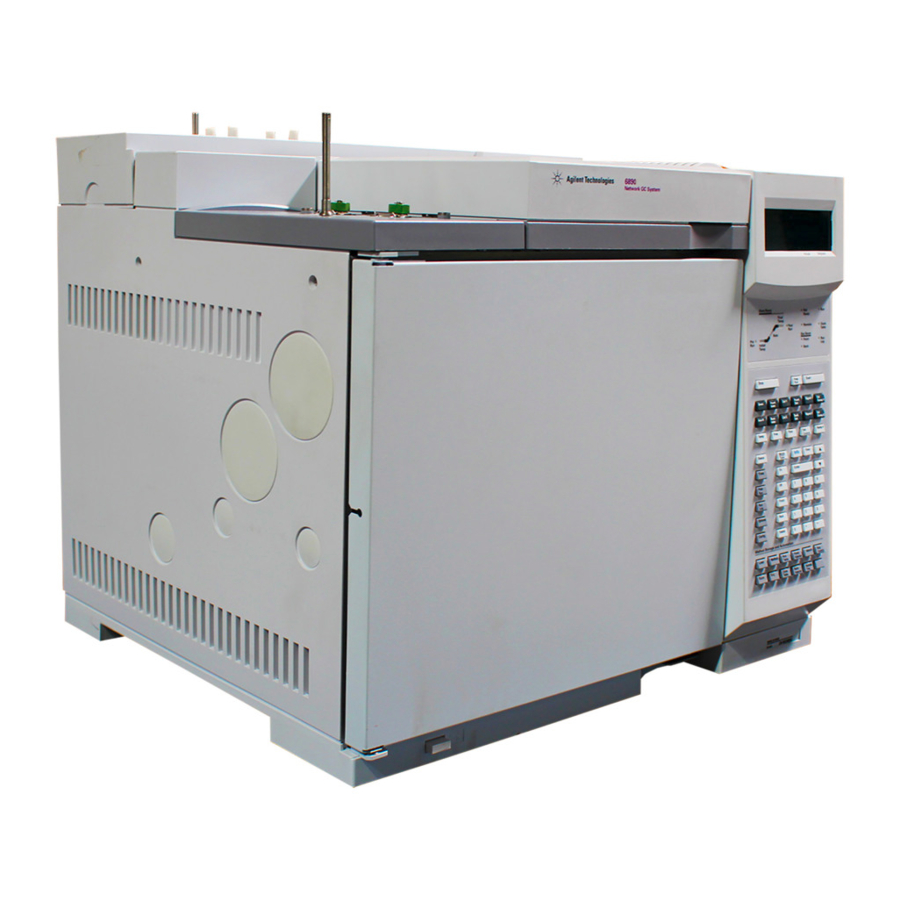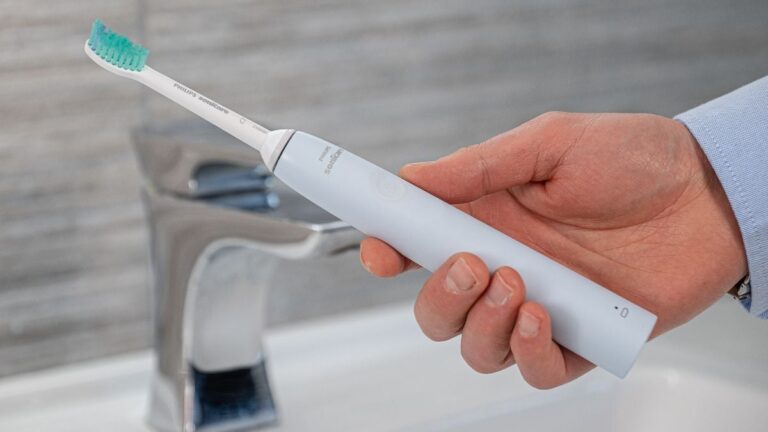Agilent 6890 Troubleshooting Guide
The Agilent 6890 is a reliable gas chromatograph used in many labs. Despite its reliability, issues can arise during its use.
Understanding how to troubleshoot the Agilent 6890 can save time and prevent frustration. This guide aims to help users identify and fix common problems. With clear steps, you can ensure your device runs smoothly. Troubleshooting can seem daunting, but it doesn’t have to be.
By following this guide, you will learn to handle minor issues confidently. Whether you’re dealing with leaks, temperature problems, or signal noise, this guide covers it all. Get ready to troubleshoot your Agilent 6890 with ease and keep your lab work on track.

Introduction To Agilent 6890
The Agilent 6890 is a powerful gas chromatograph designed for precise analysis. This guide will help you troubleshoot common issues with your Agilent 6890. Understanding its key features and functionalities is crucial for efficient operation and maintenance.
Overview
The Agilent 6890 is renowned for its reliability and performance. It is widely used in analytical chemistry labs. It offers excellent separation capabilities and accurate results.
This device is equipped with advanced technology to handle complex samples. It ensures high-quality data output. The Agilent 6890 supports various detectors and auto-samplers for versatile applications.
Key Features
The Agilent 6890 boasts several key features that make it a preferred choice for many laboratories:
- High Sensitivity: The device can detect minute quantities of compounds.
- Wide Temperature Range: It operates efficiently across a broad temperature spectrum.
- Advanced Software: The software provides easy control and data analysis.
- Flexible Configuration: It supports different detectors like FID, TCD, and ECD.
- Auto-sampler Compatibility: It integrates seamlessly with various auto-samplers.
These features make the Agilent 6890 an ideal choice for complex analyses. It ensures accuracy and efficiency in your results.
Common Issues
The Agilent 6890 is a reliable gas chromatograph. But, like any device, it faces issues. Knowing common problems helps keep it running well. This guide covers typical hardware and software issues.
Hardware Problems
Hardware issues can disrupt your work. Common problems include loose connections. Make sure all cables are secure. Check the power supply. A faulty power supply can cause shutdowns. Inspect the detector. Dirty detectors affect performance. Clean them regularly. Verify the column. Damaged columns lead to poor results. Replace columns if needed. Keep spare parts handy. This reduces downtime.
Software Glitches
Software glitches are frustrating. They can halt your work. Start by checking for updates. Updated software fixes bugs. Restart the system often. This clears temporary issues. Look at error messages. They give clues to problems. Ensure your computer meets system requirements. Inadequate specs cause slow performance. Backup data often. This prevents loss during crashes. Contact support for persistent issues.
Maintenance Tips
Proper maintenance of the Agilent 6890 GC can save time and money. Regular upkeep ensures consistent performance and extends the lifespan of the equipment. Here are some essential maintenance tips to keep your Agilent 6890 running smoothly.
Regular Cleaning
Regular cleaning prevents buildup and contamination. Clean the injector port often. Use a lint-free cloth and solvent. Check the detector for residue. A clean detector ensures accurate readings. Don’t forget the column. A clean column is crucial for reliable results.
Component Inspection
Inspect components regularly for wear and tear. Check the septum for leaks. A damaged septum affects the system’s performance. Examine the O-rings. Replace them if you see cracks. Look at the gas filters. Change them if they appear clogged. Inspect the column connections. Tight connections prevent leaks.

Error Codes And Solutions
Encountering error codes on your Agilent 6890 can be frustrating. Understanding and addressing these errors is essential. This guide helps you interpret error codes and offers quick fixes.
Interpreting Error Codes
Error codes on the Agilent 6890 provide specific information. These codes point to issues within the system. Each code has a unique meaning. Knowing the meaning helps in troubleshooting.
The user manual lists all error codes. Cross-referencing your error code with the manual is the first step. This will help identify the problem area. Some errors might need professional assistance.
Quick Fixes
Not all errors need a technician. Some can be fixed quickly. Simple checks might solve the problem. Ensure all connections are secure. Loose cables can trigger error codes.
Check the gas supply. Low gas pressure often causes errors. Make sure gas cylinders are not empty. Verify the power supply. A stable power source is crucial. Sometimes, a reboot can solve the issue.
These quick fixes can save time. If the error persists, consult the manual. For more complex issues, contact support. Always keep the user manual handy.
Optimizing Performance
To achieve the best results with your Agilent 6890, optimizing its performance is crucial. This guide will cover key aspects such as calibration techniques and method development. These steps help ensure your instrument runs smoothly and provides accurate data.
Calibration Techniques
Calibration is essential for accurate measurements. Follow these steps to ensure your Agilent 6890 is properly calibrated:
- Regular Calibration: Schedule regular calibration sessions. This helps maintain accuracy.
- Use Certified Standards: Always use certified reference materials. These standards ensure reliability.
- Check Baseline Stability: Monitor the baseline regularly. A stable baseline is crucial for accurate results.
Remember, consistent calibration improves data quality. It also extends the life of your equipment.
Method Development
Developing effective methods is key to optimizing performance. Here are some tips for method development:
- Define Objectives: Clearly define the goals of your analysis. This guides the method development process.
- Select Suitable Columns: Choose columns based on the type of analysis. This ensures compatibility and efficiency.
- Optimize Parameters: Adjust parameters like temperature and flow rate. Fine-tuning these settings enhances performance.
Effective method development leads to more accurate and reliable results. It also helps in troubleshooting any issues that arise.
Gas Flow Issues
Gas flow issues can severely impact the performance of your Agilent 6890. Proper gas flow ensures accurate results and efficient operation. Addressing gas flow problems can improve the reliability of your analysis. This guide will help you identify and correct common gas flow issues.
Identifying Leaks
Leaks are a common cause of gas flow issues. First, listen for any hissing sounds. Use a leak detector or soap solution to find leaks. Check all connections, fittings, and seals. Tighten or replace any loose or damaged parts. Regular maintenance can prevent leaks.
Adjusting Flow Rates
Incorrect flow rates can affect your results. Check the flow rates set on your gas chromatograph. Compare these to the recommended settings. Adjust the flow rates using the control panel. Monitor the flow rates to ensure they remain stable. Proper flow rates lead to accurate and consistent data.
Temperature Control Problems
Temperature control problems are common issues in the Agilent 6890 gas chromatograph. These problems can affect the reliability of your analysis. Understanding and troubleshooting these issues will help maintain your equipment’s performance.
Oven Temperature Stability
Oven temperature stability is critical for accurate results. If the oven temperature fluctuates, check the temperature program. Ensure it is set correctly. Inspect the oven door seal for any damage. A faulty seal can cause temperature variations. Clean any debris from the oven interior. This can also affect temperature control.
Detector Temperature
Detector temperature is another important factor. It ensures consistent detection of compounds. If the detector temperature is unstable, inspect the heater connections. Loose connections can cause temperature changes. Verify the set temperature matches the method requirements. Clean the detector regularly. Dust and debris can interfere with temperature regulation.
Column Issues
Column issues are common when working with the Agilent 6890. Problems with the column can affect the accuracy of your results. Understanding how to properly install and condition your column can help. Let’s explore some key steps.
Column Installation
Proper installation of the column is crucial. Start by ensuring the column is the right size and type. Check the manufacturer’s instructions for specifics. Attach the column to the injection port and detector correctly. Tighten the fittings but avoid overtightening. This can damage the column.
Next, check for leaks. Use a leak detector or soap solution. Leaks can lead to poor performance and inconsistent results. Ensure all connections are secure. This step is vital for a successful setup.
Column Conditioning
Column conditioning prepares the column for use. Begin by setting the oven to the conditioning temperature. This is usually higher than the operating temperature. Allow the column to heat for a few hours. This step removes contaminants and stabilizes the column.
Monitor the baseline during conditioning. It should stabilize and show minimal noise. If the baseline remains unstable, check for issues. The column might need additional conditioning or replacement. Proper conditioning ensures accurate and reliable results.
Preventive Measures
Maintaining the Agilent 6890 GC system can prevent many issues. Regular check-ups and training can save time and reduce downtime. This guide covers key preventive measures.
Scheduled Maintenance
Regular maintenance can extend the lifespan of your Agilent 6890. Create a maintenance schedule to ensure all parts are in good condition. Here are some tasks to include:
- Check for leaks in the gas lines.
- Replace filters and septa regularly.
- Inspect and clean the injection port.
- Verify the performance of the detectors.
Recording each maintenance activity helps track the system’s health. A simple table can help keep records organized:
| Date | Task | Status | Notes |
|---|---|---|---|
| 01/10/2023 | Replaced Septa | Completed | Replaced with new septa |
| 01/15/2023 | Checked Gas Lines | Completed | No leaks found |
Training And Best Practices
Proper training can prevent many common issues. Ensure that all users are familiar with best practices. These practices include:
- Using the correct solvents and chemicals.
- Handling the instrument with care.
- Following the manufacturer’s guidelines.
- Keeping the work area clean and organized.
Regular training sessions help users stay updated. Incorporate both theoretical and hands-on training for the best results.
Additional Resources
Having the right resources can simplify troubleshooting your Agilent 6890 gas chromatograph. Accessing the right materials can save you time and stress. Below, we discuss some essential resources.
User Manuals
The user manuals offer detailed instructions for operating your Agilent 6890. They cover setup, maintenance, and troubleshooting procedures. Manuals often include diagrams and step-by-step guides. These can help you understand each component. If you face an error, the manual can be your first go-to resource.
Always keep your manual handy. If you lose it, you can download a copy from Agilent’s website. Search for the specific model and version. A digital copy ensures you always have access to the information you need.
Technical Support
Agilent offers robust technical support for their products. If you encounter issues that the manual cannot resolve, contact their support team. They can guide you through troubleshooting steps. This service can be accessed via phone, email, or live chat.
Technical support can provide expert advice. They may suggest parts replacement or more advanced fixes. Always have your model and serial number ready. This helps the support team provide precise assistance.
Frequently Asked Questions
What Are Common Issues With Agilent 6890?
Common issues include leaks, temperature errors, and detector problems. Check connections and settings.
How To Fix Temperature Errors On Agilent 6890?
Ensure the oven is calibrated. Check for sensor malfunctions. Verify temperature settings.
Why Is My Agilent 6890 Detector Not Working?
Check for power issues. Verify detector settings. Inspect for blockages or contamination.
How To Solve Agilent 6890 Leaks?
Inspect all connections. Tighten fittings. Replace faulty seals or gaskets.
What Maintenance Does Agilent 6890 Require?
Regularly clean the injector. Replace worn parts. Calibrate the system periodically for accuracy.
Conclusion
Solving issues with the Agilent 6890 can be straightforward. Follow this guide to identify and fix common problems. Regular maintenance helps avoid many issues. Check connections, clean components, and update software. If problems persist, seek professional help. Understanding your equipment ensures reliable performance.
Keep this guide handy for quick reference. Happy troubleshooting!






